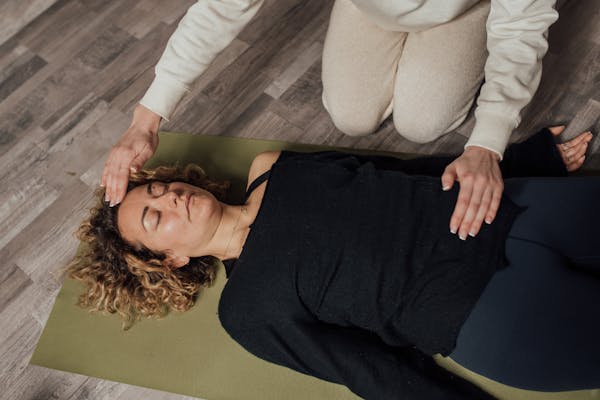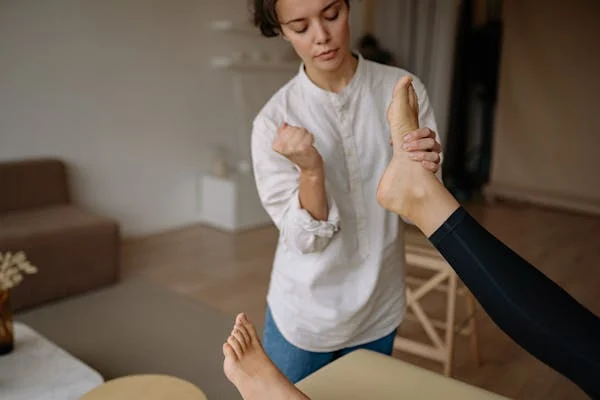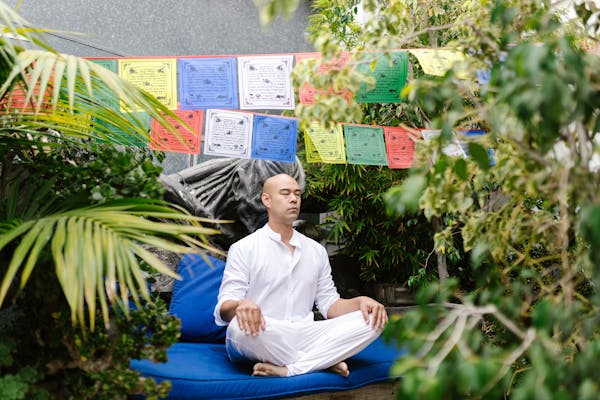Table of Contents
Introduction
Relaxation techniques are aimed to reduce stress, calm the body, and revive the feeling of inner peace. Using relaxation as a tool to manage stress engages the parasympathetic nervous system-the “rest and digest” system-and counteracts the fight-or-flight response elicited by stress.
Through its repeated application, relaxation techniques lead to enhanced mental clarity, sharper concentration, and better emotional response to a particular situation.
The objective of this blog is to introduce you to a host of relaxation techniques that provide instant calm and relief from stress, thereby giving you the chance to live life in a more positive and fulfilling manner.
You will break the cycle of stress through these techniques, learn how to relax profoundly, and recover your body and mind to the natural state.

What are relaxation techniques?
Relaxation techniques consist of several methods used to reduce tension in both the body and the mind. Such techniques serve as a countering mechanism for stress-related effects like increased heart rate, racing breathing, and muscular tension.
Relaxation techniques help reduce anxiety, lower blood pressure, and enhance sleep. Improved emotional health also results.
Examples of commonly practiced relaxation techniques are:
Breathing Exercises: The intentional repetition of breathing patterns helps relax both the body and the mind.
Meditation: Mindfulness or concentration practices that quieten the mind and increase the level of awareness.
Yoga: A lifestyle incorporating physical postures, breathing exercises, and meditation to reduce tension and promote relaxation.
Aromatherapy: Using smells as a stimulant for the body’s relaxant responses.
Visualization: The use of peaceful imagery to quieten the mind and release stress.
Why are relaxation techniques important to everyday modern life?
The more demand modern life increases, the more important it is to manage stress effectively. Chronic stress has been linked to many health problems including anxiety, depression, heart disease, digestive problems, and sleep disorders.
Relaxation techniques can counteract these negative effects by offering many health benefits:
Reduces Stress: Relaxation techniques will activate the parasympathetic system, which reduces cortisol levels, thus reducing stress.
Improves Mental Health: Proper and consistent relaxation practice enhances mood, decreases anxiety, and even lessens symptoms of depression.
Increases Positivity: Relaxation techniques enhance control over emotions, increasing positivity, amending relationships, and raising the quality of life in general.
Physical Health: Reducing stress levels by relaxing can reduce the risk of physical illnesses related to stress, including hypertension and heart disease.


Powerful Relaxation Techniques to Instantly Relieve Stress
Deep Breathing Exercises: A Simple and Effective Technique
How it works: Deep breathing exercises are the most accessible, effective relaxation technique for instant calm. Focusing on slow deep breaths can activate the parasympathetic nervous system, which may help slow the heart rate and relax the muscles.
How to practice:
Choose a comfortable sitting position, but keep your back straight and relax your shoulders.
Close your eyes. Take deep inhale through the nose for count of four when you let belly raise filling lung with air
Breathe in, do nothing. End by breathing slowly through mouth six times when air will release whatever tension exists, Repeat the procedure 5 -10 minutes which makes mind tranquil by every passing breath.
Relaxes, the nervous system slowing down the heart rate thus it is set up to relax tensions like anxiety and stress.
Improves mental acuity and concentration due to improvements in the flow of oxygen in the brain.
This can be done anyplace, anytime, so it perfectly suits the people who are always busy.
Progressive Muscle Relaxation (PMR): A Thorough Relaxation Technique
How it works: PMR involves tensing then relaxing various parts of the body. With each progressive release of physical tension, you facilitate your body’s natural relaxation response, which generates feelings of calmness and well-being.
How to practice:
Identify a quiet, comfortable space where you can relax without being disturbed.
Start with your feet and move your way up the body, tensing and relaxing each muscle group for approximately 10-15 seconds.
Start with your toes, move to your calves, thighs, abdomen, hands, arms, shoulders, neck, and finish with your face.
Pay attention to the difference between tension and relaxation and consciously let go of any remaining tension in each muscle group.
Allow a few moments of relaxation after each muscle group is relaxed.
Benefits:
Reduces muscle tension, which is often a physical manifestation of stress.
It helps to increase body awareness, which can make you more aware of where the tension spots are in your body.
Helps in sleeping as it calms the body and mind before going to bed.


Mindfulness Meditation: Mindfulness in the Present Moment
How it works: Mindfulness meditation is all about being in the present moment. The process of mindfulness meditation is that of observing thoughts, feelings, and sensations without judgment, thus breaking the cycle of stress and anxiety.
How to practice:
Sit comfortably with your back straight and your hands resting on your lap.
Close your eyes and start focusing on your breath, feeling the sensation of air entering and leaving your body.
If your mind starts to wander, gently refocus your attention back to your breath without judgment.
Alternatively, you can use a guided meditation app or audio to help keep you focused.
Practice for 10-20 minutes and you may gradually increase this time.
Benefits:
Improves concentration and attention by training your mind on the present.
It is calming an anxious and depressed mind by realizing a sense of inner serenity.
It enhances the regulation of emotions in its effort to react better under stress
Guided Imagery: Unlocking the Power of Visualization
It is guided imagery that uses the visual imagination to take your mind out to full ambiance and peaceful surroundings, allowing you to feel relaxed and stress-free.
This practice relies on the connection between your mind and body, as it uses neutralizing mental imagery to smooth out both physical and psychological tension.
How to practice:
Sit or lie down in a comfortable position.
Close your eyes and place yourself in a peaceful location, perhaps the beach, forest, or mountaintop.
Engage all your senses to create a vivid experience: hear the sound of waves, feel the warmth of the sun on your skin, and smell the fresh air.
Allow yourself to totally experience the peace and relaxation with the imagery.
Practice for 10-15 minutes, relaxing your body and mind.
Benefits:
Reduces stress by producing a sense of peace and relaxation.
Improves mood and emotional well-being through positive imagery.
It provides mental clarity because it calms and concentrates the mind.
Yoga: A Holistic Practice for Body and Mind
How it works: It is an activity that combines physical postures, breathing techniques, and meditation to give your entire body relaxation. Any combination of movement, breath control, and mindfulness present an opportunity to relieve tension, increase flexibility, and soothe the mind.
How to practice:.
Start with a mild yoga practice: focus on mild stretches and watchful breaths.
Start from those postures that would liberate tension within your back, neck, or shoulders. Those might include Downward Dog, Child’s Pose, or Cat-Cow.
Gradually add controlled breathing through each pose
Conclude by sitting in still meditation or lying in savasana (Corpse Pose), releasing fully to the body and mind.
Benefits:
Flexibility, strength, and good posture will be improved as less physical tension remains.
A clear-thinking mind, accompanied by concentration, will result through practicing breath in conjunction with movement.
Reduces stress and anxiety through calming the nervous system through mindful movement.
Aromatherapy: Using Scents for Stress Relief
How it works: Aromatherapy uses essential oils to induce relaxation, relieve stress, and lift mood. Certain scents such as lavender, chamomile, and sandalwood stimulate the brain’s relaxation response, relieving some of the tension and anxiety.
How to practice:
Select from essential oils which have calming properties, including lavender, eucalyptus, or bergamot.
Use a diffuser that disperses the scent throughout your home or office.
Alternatively, apply a few drops to your pillow, wrist, or diffuser jewelry for personal relaxation.
Inhale deeply and allow the aroma to calm your mind.
Benefits:
Reduces anxiety and stress through scent-based relaxation.
Improves mood and emotional well-being by triggering calming responses in the brain.
Enhances sleep quality by promoting relaxation before bedtime.


Mantra Meditation: Harnessing the Power of Words
It works this way: Mantra meditation is the repetition of a specific word or phrase, called a mantra. It pacifies the mind and brings out a feeling of serenity inside the individual. The repeated sound or vibration helps to guide your thoughts in order to create an inner peace that’s deep.
How to practice:
Sit comfortably and close your eyes.
Choose a soothing mantra like “peace,” “om,” or “relax.”.
Recite the mantra to yourself silently with focus on its sound and vibrations.
If the mind starts wandering, bring back the focus gently to the mantra without judgment.
Do it for 10 to 20 minutes; the repeated mantras create a sense of relaxation.
Benefits:
Thereby reduces mental chatter and encourages one to feel more relaxed
Enhances the concentration and attention ability by locking in the thought at the mantra.
It encourages a feeling of serenity and a positive vibration from within.
The full benefits of relaxation techniques can only be achieved by being consistent with them. Here are some tips on how to incorporate these techniques into your daily routine:
Start Small: Spend just 5-10 minutes a day practicing one relaxation technique. Gradually increase the time as you become more comfortable.
Set a Routine: Practice your chosen techniques at the same time each day to build a consistent habit.
Create the Right Environment: Dim lights, soothing scents, or soft music can all contribute to making one feel relaxed.
Mix and Match: Feel free to combine different techniques for maximum benefit, such as deep breathing followed by yoga or meditation.
Conclusion
Relaxation techniques are one of the essential tools in dealing with stress and keeping mental and physical health in this modern world.
Deep breathing, progressive muscle relaxation, mindfulness meditation, and many other techniques will help minimize the impact of stress on your life.
Through regular practice, you will learn how to relax deeply, improve your emotional well-being, and live a more positive and balanced lifestyle.
So, take a little time every day to unwind and tap into the power of relaxation techniques for a calmer, more positive you.
